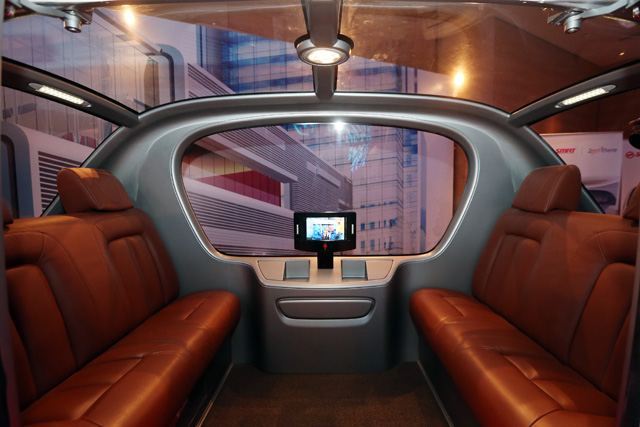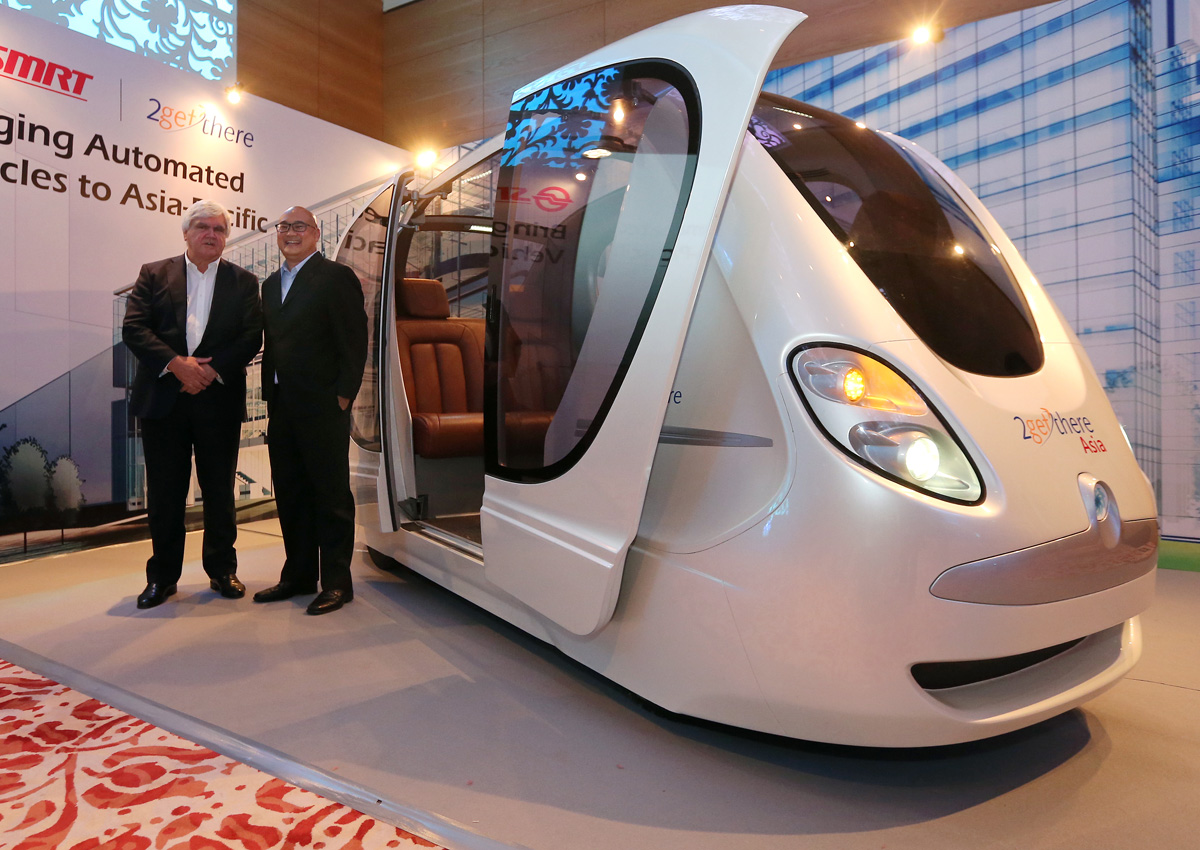SMRT and Netherlands-based firm in tie-up to bring driverless vehicle systems here and to region
Driverless “pods” ferrying passengers within private estates, university campuses and business parks could arrive in a big way, with a new joint venture announced yesterday.
Local transport operator SMRT and Netherlands-based 2getthere have formed 2getthere Asia – an outfit to bring such automated vehicle systems into Singapore and the Asia-Pacific region.
The joint venture is 51 per cent owned by SMRT and 49 per cent by 2getthere.
By the end of the year, 2getthere Asia could showcase what it calls a group rapid transit (GRT) vehicle – an air-conditioned, 24-passenger “pod” – in a live setting here.
While the GRT will not ply public roads, it can work in what 2getthere calls a “semi-controlled” environment, in which the behaviour and speeds of other road users can be managed.
Travelling at up to 40kmh, it can pick up and drop off passengers at designated stops.
2getthere has already installed similar automated vehicle systems in Masdar City, Abu Dhabi, and the Rivium Business Park in Rotterdam, the Netherlands.
In Masdar City, the system cost some US$10 million (S$13.4 million) to implement, and has transported more than two million passengers.
Company executives said they are in talks with several organisations in Singapore – including an education campus and a private company – to implement such a system, but declined to reveal names.
As the GRT will not require drivers and can be ordered on demand, it is touted to be safer and more resource-efficient.
SMRT Services managing director Colin Lim said during a press briefing: “There is a growing national push to implement future mobility solutions that can meet our first- and last-mile connectivity needs in Singapore.”
During the parliamentary debate on the Ministry of Transport’s budget last week, Transport Minister Khaw Boon Wan said driverless pods that can be summoned with a mobile device will allow people to do without cars, and help Singapore go “car-lite”.
While 2getthere’s automated vehicle system, which also has a configuration using smaller, four-passenger pods, is not sophisticated enough to navigate public roads unlike, say, the Google car, Mr Lim is confident of its value in application.

He said: “Fully autonomous travel is very exciting… It’s a very exciting future, but will this future come about tomorrow? This product you see is ready today – it’s safe and has got a good track record.”
Mr Carel van Helsdingen, chairman and founder of 2getthere, said its automated vehicle system is able to work well in bad weather – unlike driverless cars that employ laser and camera sensors – because it uses magnets embedded in the road to guide the vehicles.
The thumb-size magnets are installed every 2m to 3m in the road. Sensors on the vehicles help to spot obstacles, such as pedestrians, hence preventing accidents.
Mr Lim said that, in the future, the automated vehicle system could also be deployed at SMRT’s depots to transport staff.
Elsewhere on the island, autonomous vehicles are undergoing tests at one-north, while the Sentosa Development Corporation and ST Engineering are working on developing self-driving shuttle services on Sentosa.
adrianl@sph.com.sg

This article was first published on April 21, 2016.
Get a copy of The Straits Times or go to straitstimes.com for more stories.






